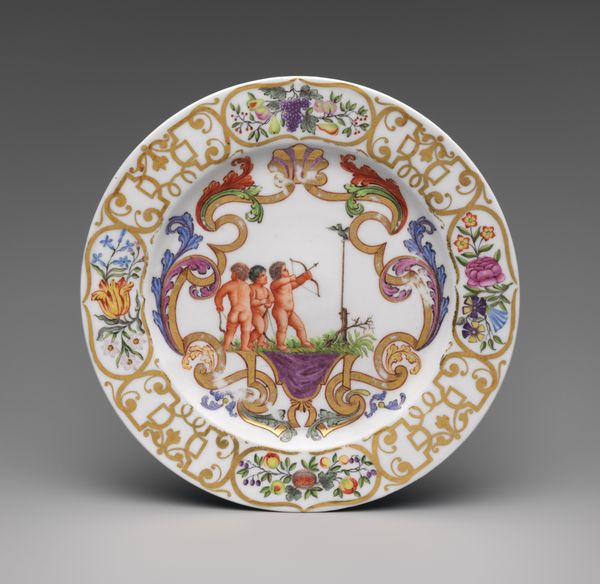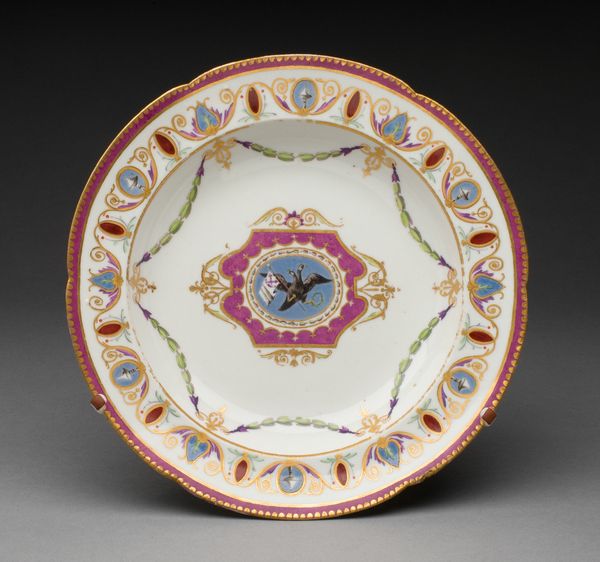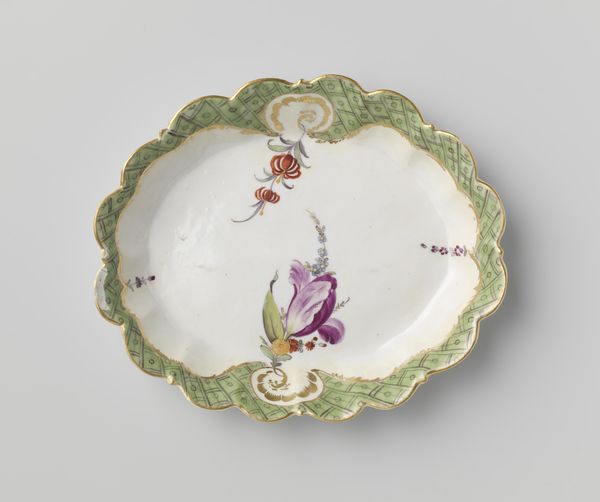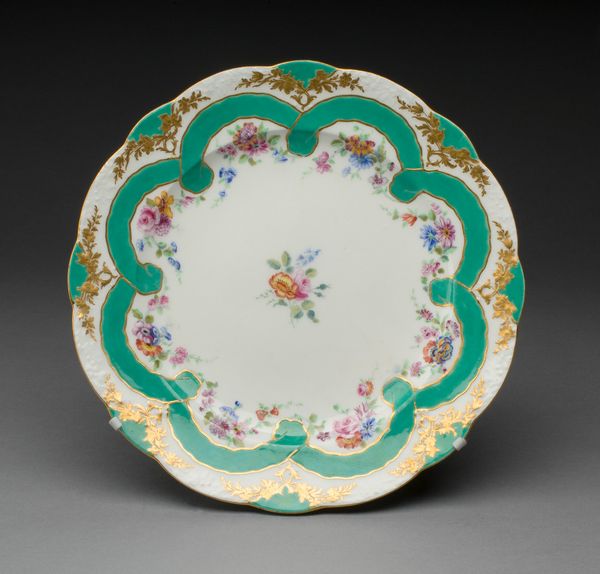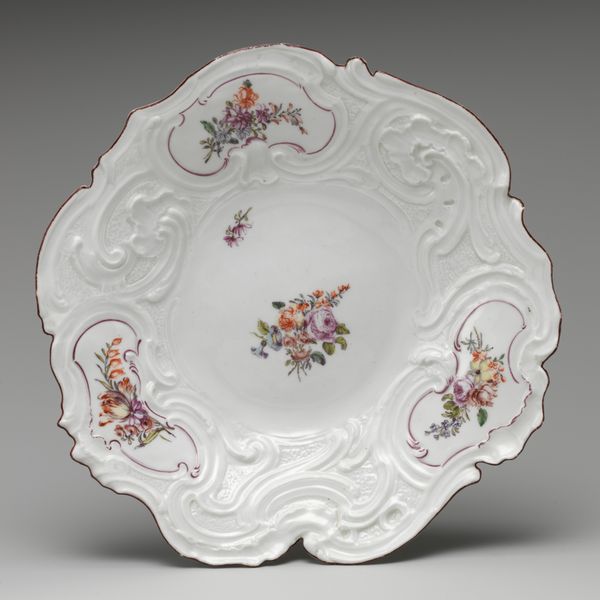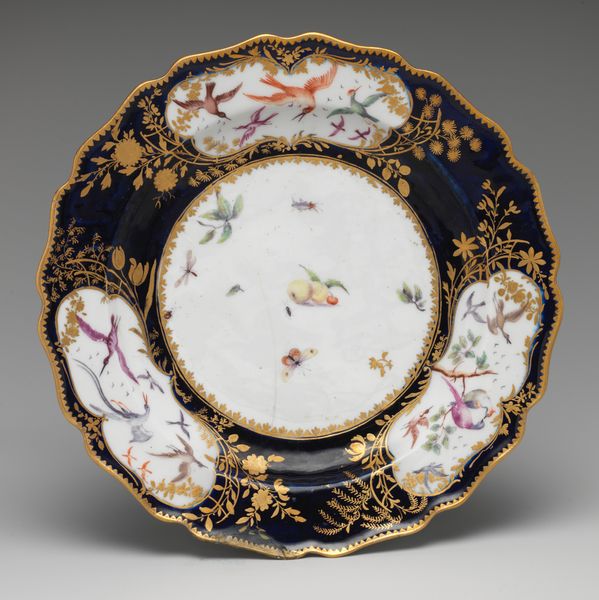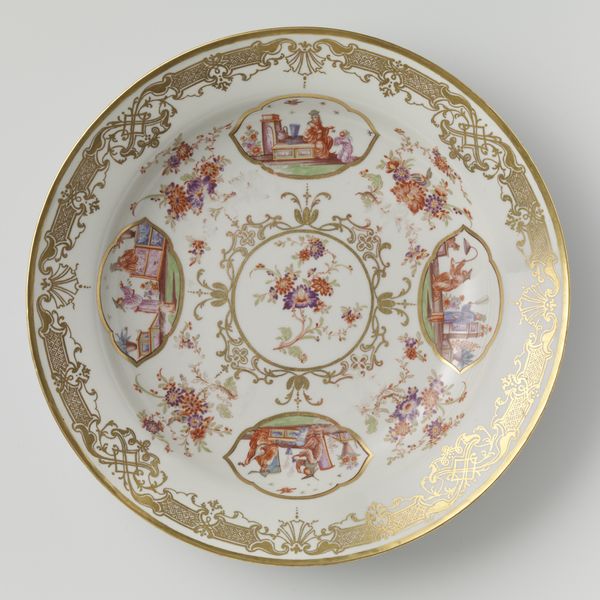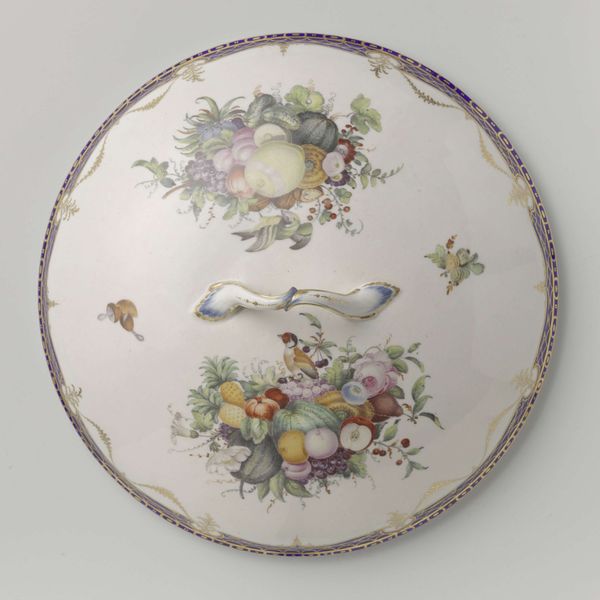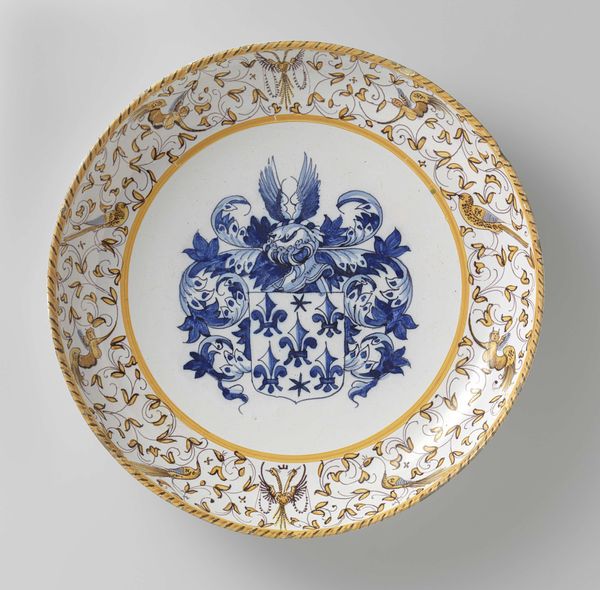
porcelain
#
porcelain
#
decorative-art
#
rococo
Dimensions: Overall (confirmed): 1 3/8 x 9 1/8 x 7 in. (3.5 x 23.2 x 17.8 cm)
Copyright: Public Domain
Editor: Take a look at this, it is a porcelain 'Stand for a small tureen', dating from around 1725 to 1740. I’m really drawn to its playful design and vibrant Rococo style. What historical factors were in play that enabled the production of objects such as this? Curator: This piece is very indicative of its era. Its porcelain material points towards growing global trade and European attempts to mimic expensive Asian imports, transforming dining culture into a display of status. How do you think an object like this served in 18th century society? Editor: I can imagine only the very wealthy had access to goods like this. Maybe they served not just a utilitarian purpose but as signifiers of luxury, social standing, and refinement. I mean, a simple bowl could serve the same basic function, right? Curator: Exactly. Consider the Rococo style itself, with its asymmetry and ornamentation. These aesthetics are closely linked to aristocratic culture and served as a visual rejection of earlier styles, signaling a shift in power and taste. These aren’t revolutionary pieces necessarily but instead indicators of an established cultural and societal power at play. Editor: So, the artistry is in more than just the decorations—it's about demonstrating the values of a certain societal segment at that moment. I wonder, would displaying this in a museum change its role from expressing social rank to promoting cultural understanding? Curator: Precisely! The museum setting alters its function. The 'Stand for a small tureen' is a time capsule. Through our modern observation we gain valuable historical and cultural insight into the intricacies of 18th-century life. Editor: It's incredible to think about how the perception of this object shifts across time and social contexts.
Comments
No comments
Be the first to comment and join the conversation on the ultimate creative platform.

